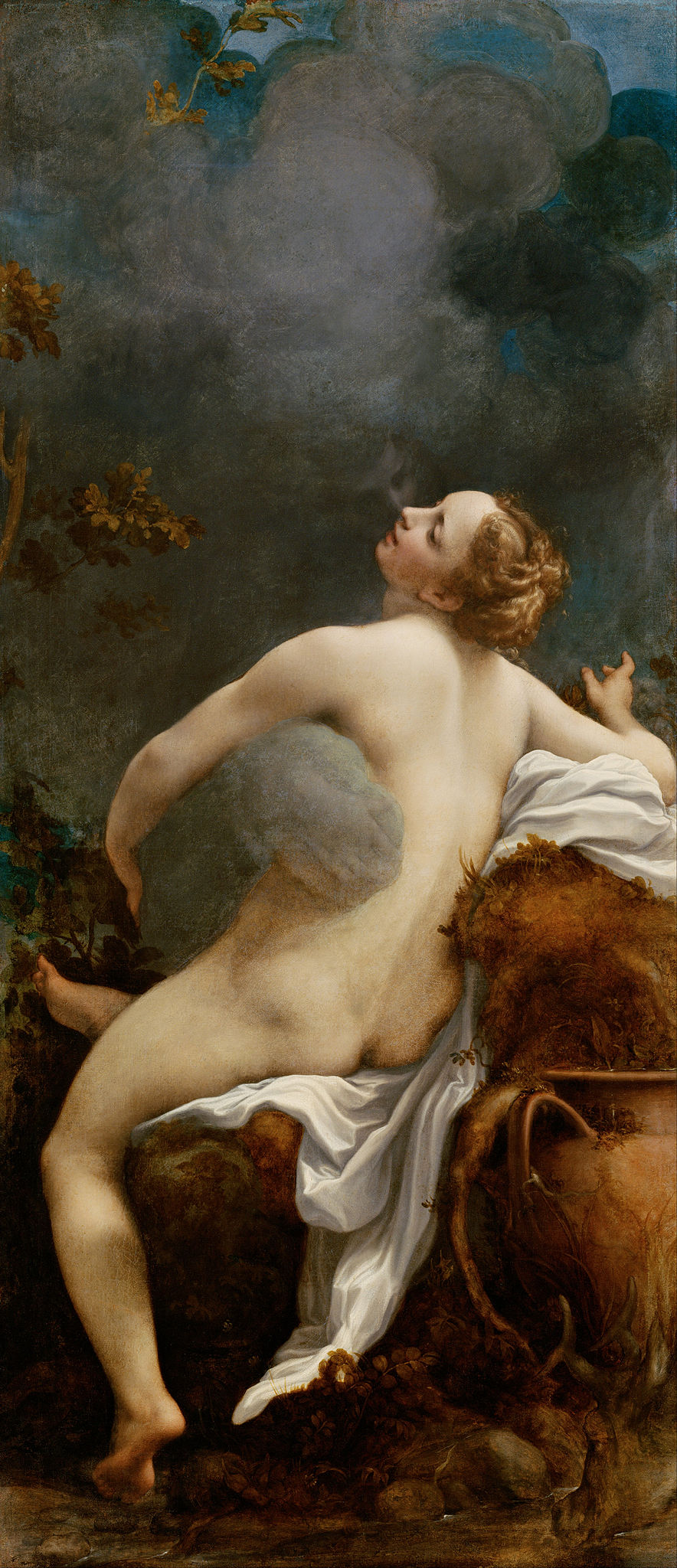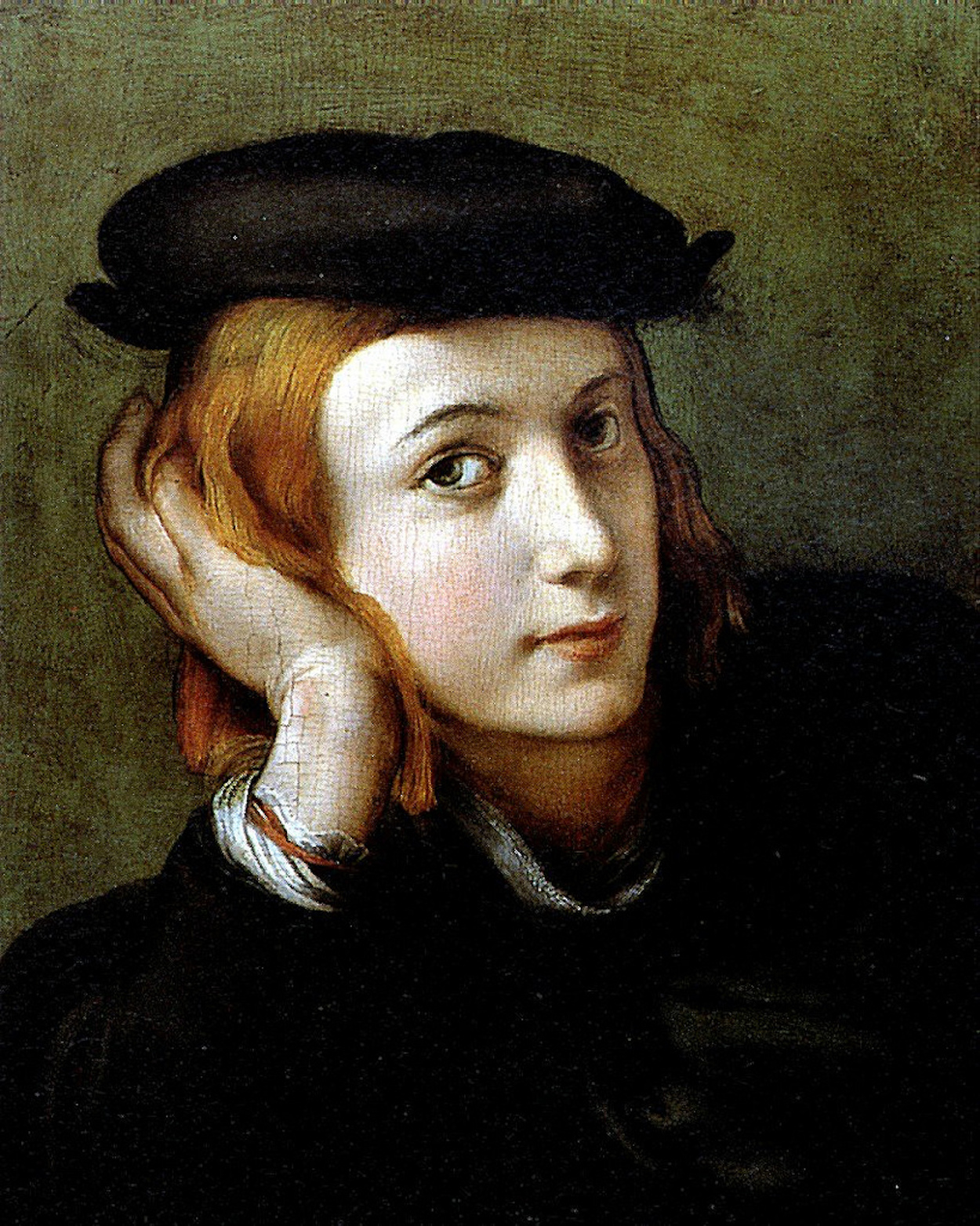Today is our last Sunday with the Kunsthistorisches Museum's collection, we hope you enjoyed this special month! Time for an absolute classic: Correggio!
When Io fled from Jupiter (in Roman mythology the king of gods and man, the master of Heaven and Earth), he summoned dark clouds in broad daylight in order to keep the object of his desire from escaping and to seduce her in all secrecy, because he feared the revenge of his jealous wife, Juno. Using a narrow upright format, Correggio focuses the passionate encounter on the view of the delicate nude back, placing it in a setting that is warm and humid. With great elegance, he depicts the erotic union of the god with Io, the mortal daughter of the river god Inachus: Jupiter’s face shimmers softly through the gray fog as he kisses Io, while his hand gently grasps her waist; the supposed victim seems to have abandoned any thought of escape. The deer drinking in the bottom right corner gives the erotic motif a trace of Christian decorum: “As the hart panteth after the water brooks, so panteth my soul after thee, O God.” (Ps. 42:1)
Correggio’s ability to combine a mystical depiction of nature with the classical figural ideal and the expression of sublime emotion made his later works important forerunners of Baroque artistic principles. The present painting was created (along with others) on a commission from Duke Federico Gonzaga of Mantua, who most likely gave them to Emperor Charles V as a gift. There was probably a certain reason for doing so: the political significance of depictions of mythological or historical rape scenes. They were widely accepted as metaphors of absolute power, which ideally, however, should have a beneficent effect. This would explain the willing consent of the victim in the present painting.


 Antonio da Correggio
Antonio da Correggio